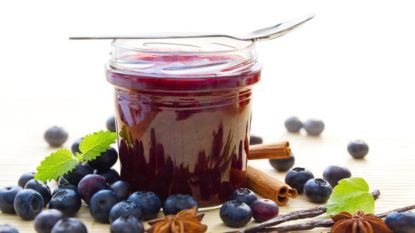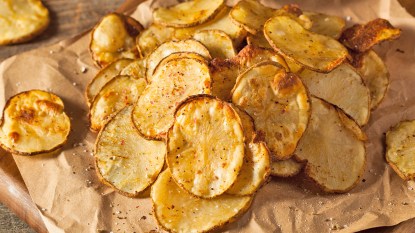This Simple Trick Makes Chewy, Rubbery Asparagus a Thing of the Past
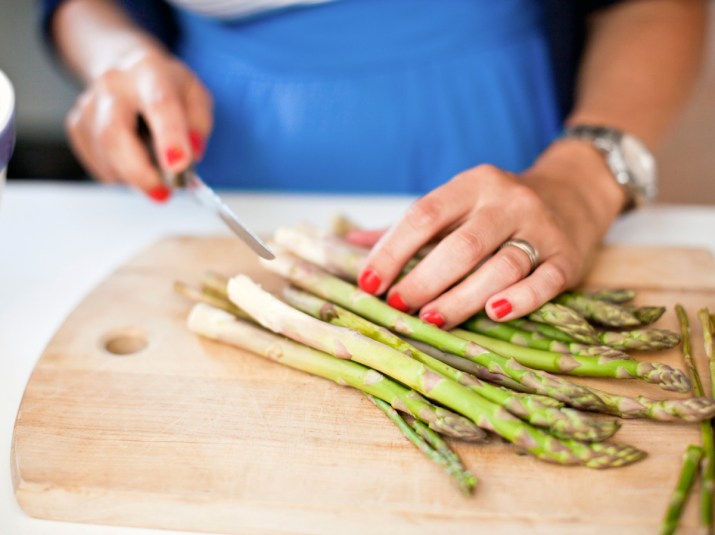
I’ve always been a fan of freshly roasted asparagus, but I also dread biting into a rubbery stalk with tough skin. For years, I just powered through the chewy fibers to get the yummy flavor, but that’s all changed after trying a simple tip for perfectly cooked asparagus.
As someone who’s trying to learn more in the kitchen in general, a friend of mine recommended the YouTube channel SORTEDfood, which revolves around five British lads — two chefs and three “normals” — sharing their insights and making new food discoveries. I took a deep dive into their archives (OK, maybe I was marathoning through every clip I could find of the delightful group of friends) and found a video where one of the pro chefs, James Currie, listed off ways to improve everyday food with a little “chefy” twist.
Most of the tips didn’t really apply to my personal cooking preferences, but my interest was piqued when he advised peeling asparagus before cooking it. Wait, what? If that idea baffles you, you’re not alone. I actually rewound the video to make sure I was hearing the tip correctly. According to Currie, you should peel the tough ends of the asparagus stalk, leaving an inch or so of the thinner skin just underneath the leafy top, then cure them in a 50/50 mixture of salt and sugar for 10 minutes to eke out all the moisture. You can then rinse them off and cook as you normally would.
Obviously, I had to test this out for myself! In the interest of fairness, I peeled and cured half a pan and left the other half unpeeled and uncured. I chopped off the tough ends, then used a regular vegetable peeler and it wasn’t all that time consuming, although it did create a bit of a mess. I also accidentally snapped a few of the asparagus in half while peeling.
To cure the peeled asparagus, I just eyeballed pouring similar amounts of sugar and salt into a bowl before plopping the stalks in. Tip: You don’t need a whole lot to get the job done, just a few pinches of each. Right off the bat, I was able to see just how much extra water there was in the asparagus stalks that had been cured.
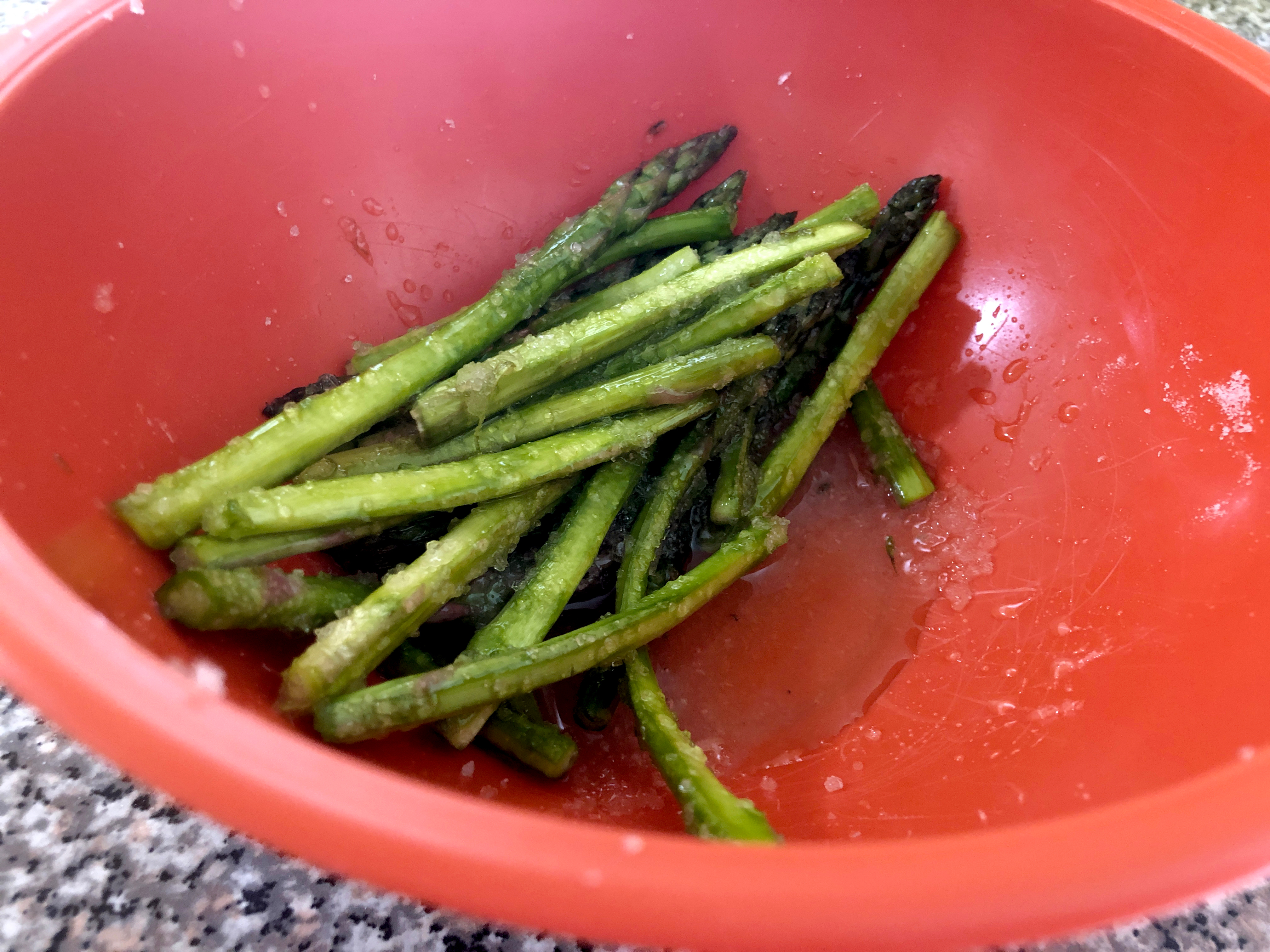
(Photo Credit: FirstForWomen.com)
That’s definitely a lot of locked in moisture — which can make that rubbery skin tougher as it heats up if it’s not peeled. I then seasoned all of them with olive oil, cayenne, cumin, and salt, and popped them all into the oven at 400 degrees Fahrenheit for about 10 minutes to get them nice and roasted.
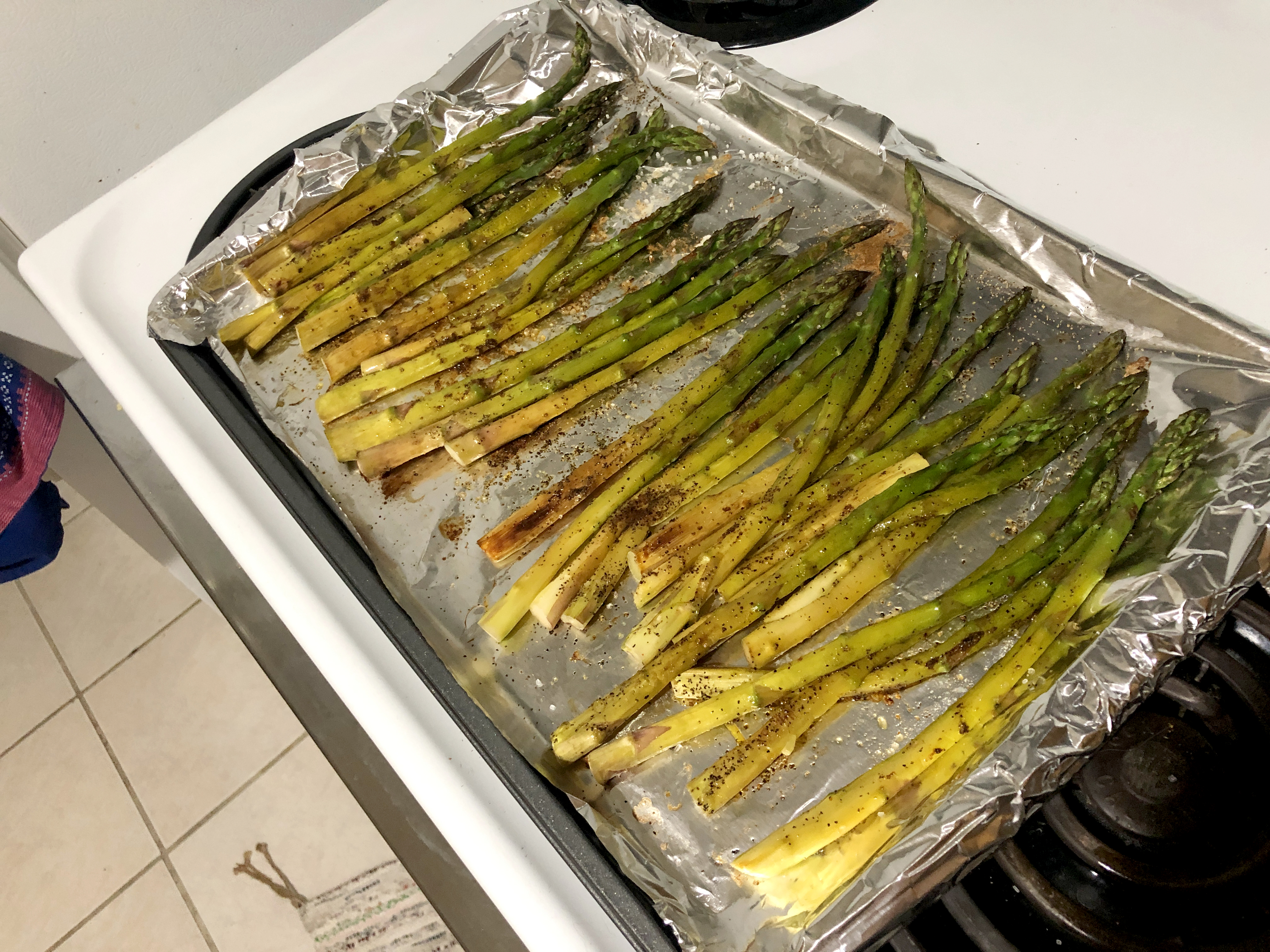
(Photo Credit: FirstForWomen.com)
I tried to keep the unpeeled asparagus on the left side of the pan, but you might notice some of my non-peeled ones jumped over to the other side when I shook them up to coat with the oil. I didn’t notice that until after taking them back out of the oven, but don’t worry, I made sure to taste-test with a bite of properly peeled vs. unpeeled.
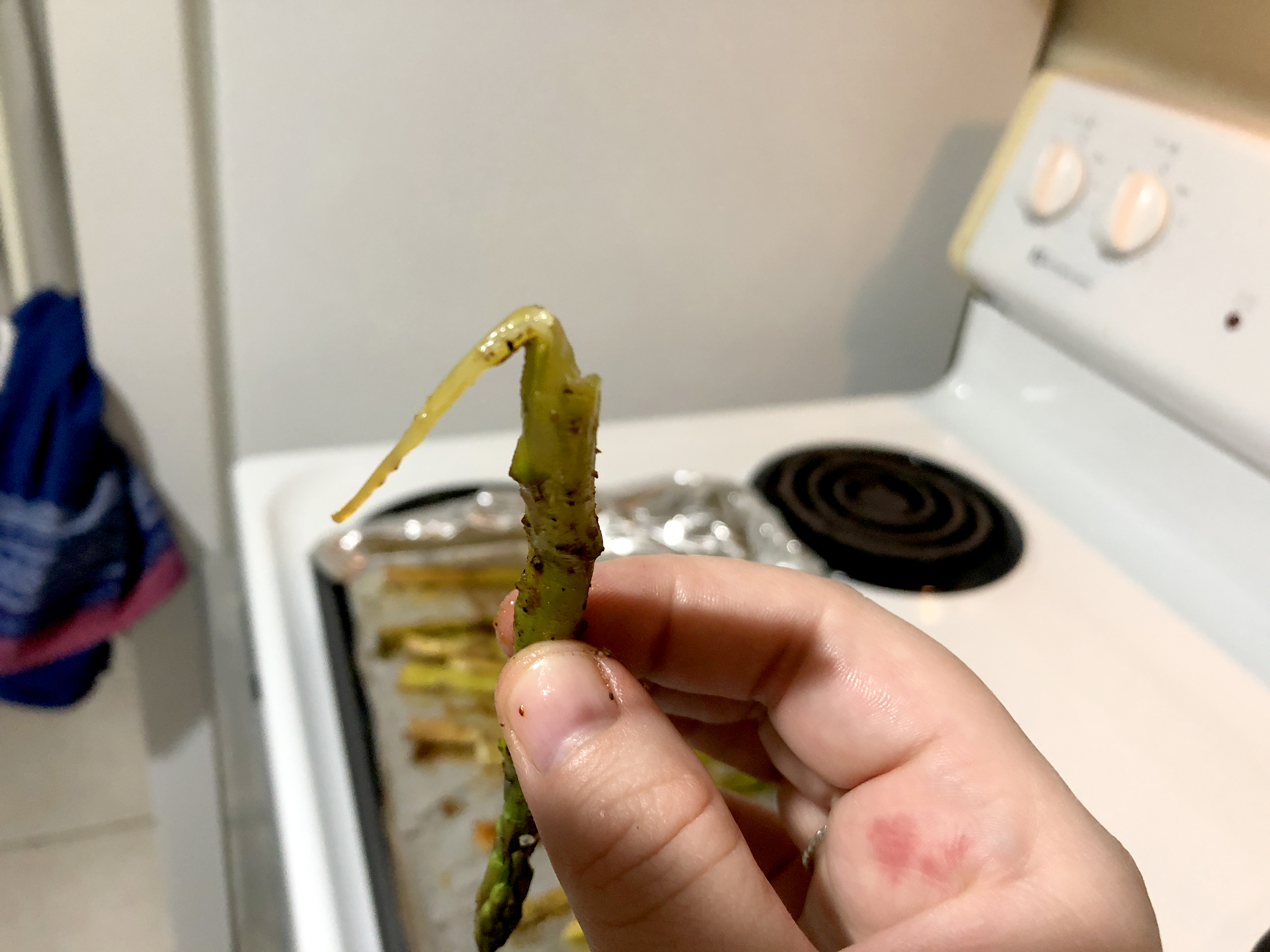
(Photo Credit: FirstForWomen.com)
As you can see, a huge portion of the unpeeled asparagus’ skin stayed on the stalk after I bit into it. This is exactly what would get stuck in my teeth and make me question eating one of my favorite foods. Keeping them unpeeled did have one advantage, though — they weren’t as floppy or droopy as the peeled ones when they came out of the oven.
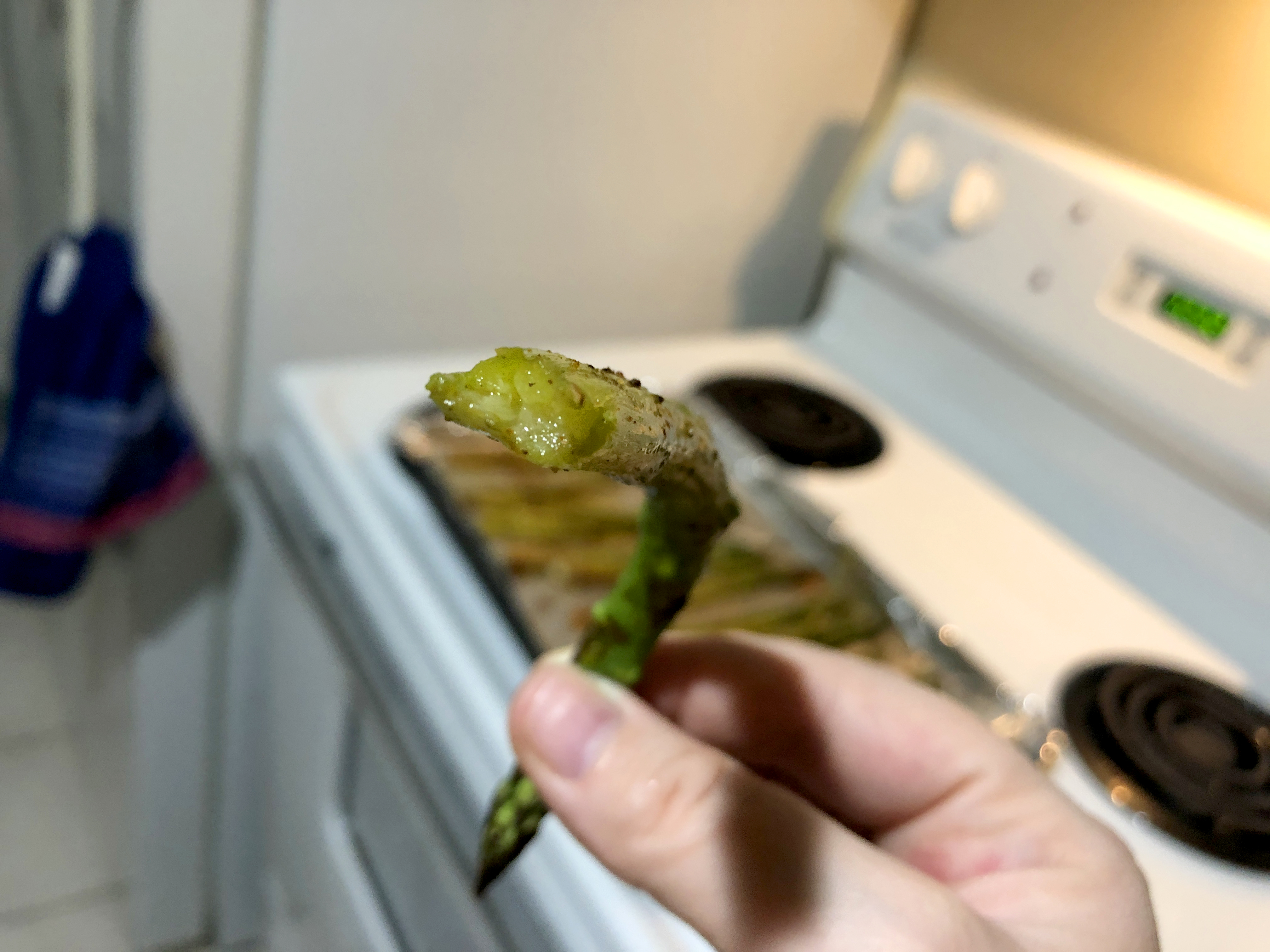
(Photo Credit: FirstForWomen.com)
But trust me when I tell you the droop was worth it, one bite from this peeled and cured asparagus was an absolute game-changer. It was like slicing through butter, honestly. How had I never thought to get rid of the one part of the vegetable that my teeth always struggled against? Still, if this seems like too much work or you’re not really bothered by the extra fibers of asparagus skin when you chow down, I’m not here to stop you.
Personally, I don’t think I’ll ever go back to not peeling and curing my asparagus from now on. Happy eating!
More From FIRST
The Pioneer Woman’s Number One Cooking Tip is Refreshingly Simple
We’ve All Been Making Pasta Wrong — Starting With the First Step
How to Get Your Kids (or Anyone) to Like the Taste of Veggies, According to Science





